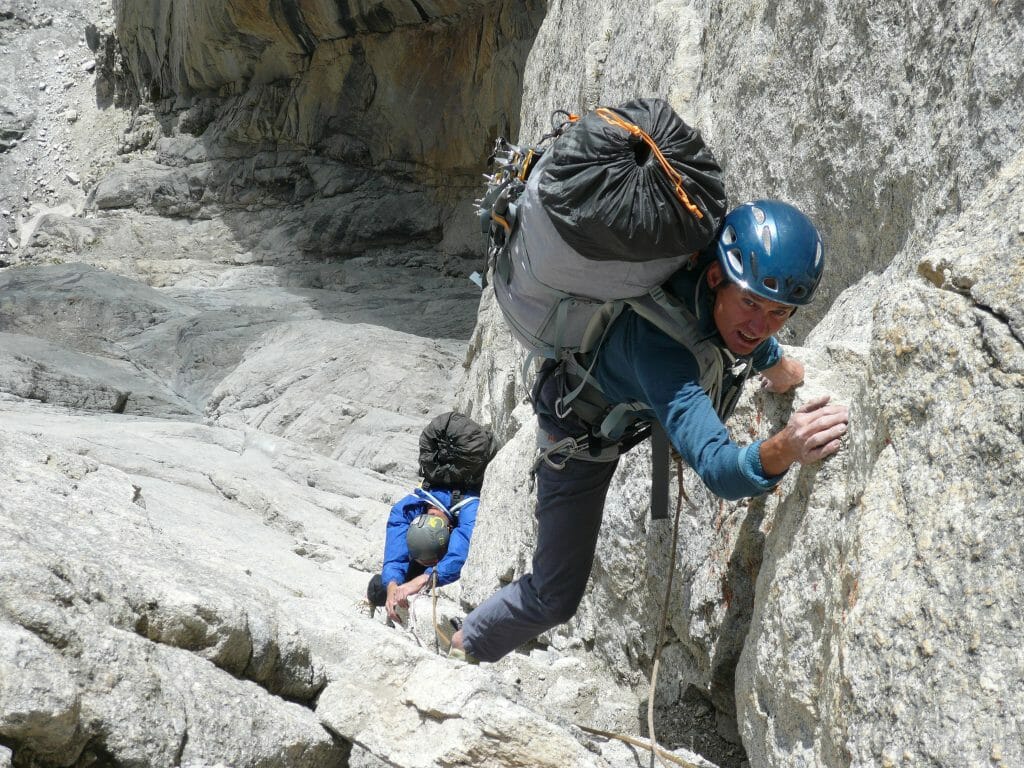Poser
WKR
I listened this this Uphill Athlete podcast this morning on Muscular Endurance:
Starts out a little nerdy, but it gets there eventually. He talks about the "dead leg" or "heavy leg" effect being tied to CNS fatigue. One thing that was of particular interest is he states that the best ME builder for mountaineers is rucking uphill where the limiting factor is (essentially) your muscular endurance output in your legs. In order to train this pathway effectively, however, you need a slope of of 30-50 degrees. The Forrest service aims for trail slope angles of no more than 11 degrees. I live in the San Juans where its particularly steep, still, though, its difficult to find actual trails that are steeper than 20 degrees for any sustained period of time. You're hard pressed to find a treadmill that will go steeper than 10 degrees. To get on 30 degree+ slopes that you can actually climb, avalanche chutes are the best option because they tend to be open. I'm fortunate in that I have access to avy chutes and regularly end up climbing them in the summer when out and about in the mountains.
Stairs, however, will accomplish this angle quite well and will probably be the most practical way to train muscular endurance for those who don't have access to steep mountains. I realize stairs are already a popular portion of many people's training, but the 30-50 degree minimum slope angle for the purposes of rucking was not something that I had considered much, afterall, 20 degrees on a trail is pretty "steep". I think that there are a lot of people who fall into the middle where they have access to trails, maybe even "steep" trails and call it good, however those "steep" trails aren't steep enough to effectively build muscular endurance in which case, you may still benefit from some time on the stairs or, even more mind numbing boring, doing box steps ups with a pack on.
The good news is, you don't need a whole of training volume to build ME assuming you have an aerobic base and sufficiently strong legs. about ~10 hours of training time spread over a few weeks will get you there assuming everything else is in order. That's 4-5 sessions.
Starts out a little nerdy, but it gets there eventually. He talks about the "dead leg" or "heavy leg" effect being tied to CNS fatigue. One thing that was of particular interest is he states that the best ME builder for mountaineers is rucking uphill where the limiting factor is (essentially) your muscular endurance output in your legs. In order to train this pathway effectively, however, you need a slope of of 30-50 degrees. The Forrest service aims for trail slope angles of no more than 11 degrees. I live in the San Juans where its particularly steep, still, though, its difficult to find actual trails that are steeper than 20 degrees for any sustained period of time. You're hard pressed to find a treadmill that will go steeper than 10 degrees. To get on 30 degree+ slopes that you can actually climb, avalanche chutes are the best option because they tend to be open. I'm fortunate in that I have access to avy chutes and regularly end up climbing them in the summer when out and about in the mountains.
Stairs, however, will accomplish this angle quite well and will probably be the most practical way to train muscular endurance for those who don't have access to steep mountains. I realize stairs are already a popular portion of many people's training, but the 30-50 degree minimum slope angle for the purposes of rucking was not something that I had considered much, afterall, 20 degrees on a trail is pretty "steep". I think that there are a lot of people who fall into the middle where they have access to trails, maybe even "steep" trails and call it good, however those "steep" trails aren't steep enough to effectively build muscular endurance in which case, you may still benefit from some time on the stairs or, even more mind numbing boring, doing box steps ups with a pack on.
The good news is, you don't need a whole of training volume to build ME assuming you have an aerobic base and sufficiently strong legs. about ~10 hours of training time spread over a few weeks will get you there assuming everything else is in order. That's 4-5 sessions.

